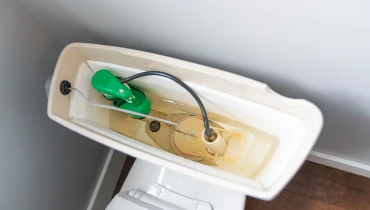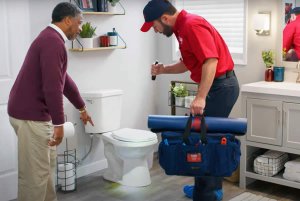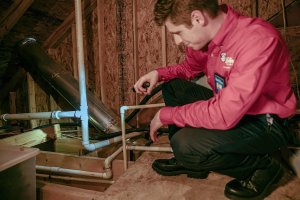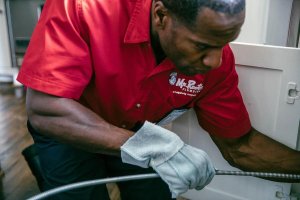Call This Tuesday to Get $50 Off

Local Emergency Plumbers in Fort Worth
Call This Tuesday to Get $50 Off

Local Emergency Plumbers in Fort Worth

Despite not being the most beautiful of home furnishings, toilet tanks are an essential part of our daily life. Until anything goes wrong and we need a plumber or plumbing service for a toilet repair or replacement, we frequently take these inconspicuous reservoirs for granted. But comprehending a toilet tank's operation can enhance our appreciation of its functionality and possibly help us avoid some typical problems.
In this blog post, our professionals from Mr. Rooter Plumbing will explore the inner workings of a toilet tank and the reasons you might need a plumber for toilet-related problems, such as toilet repair or toilet replacement.
A relatively straightforward but crucial part of your bathroom plumbing is the toilet tank. Storage and delivery of the water required to flush waste from the bowl are its main duties. Let's examine the main components of a normal toilet tank in more detail:
After going over the fundamental parts, let's explore how they interact to make the flushing process easier.
The act of pressing the toilet handle starts a series of activities inside the tank. This is how it goes:
1. When you pull on the handle, the chain and flush lever that are attached to the flapper are raised.
2. The flapper raises, revealing the tank's bottom entrance. As a result, waste can be cleared more quickly since water can flow into the bowl through the flush valve.
3. The fill valve simultaneously opens to refill the tank with water.
4. The float rises along with the tank's rising water level.
5. The float instructs the fill valve to close and halt the water flow when the tank fills to the appropriate level.
6. When the flapper returns to its original position, the flush valve is sealed and water cannot enter the bowl.
The entire procedure only takes a few seconds, and it guarantees that the toilet is prepared for the subsequent use.
Like any other home appliance, toilets can develop issues that call for the assistance of a plumber or plumbing company. The following are some typical problems that could need calling for toilet repair or replacement:
Are you in need of a plumbing service in Crowley, TX? Luckily, we at Mr. Rooter Plumbing have dedicated workers ready at your service. Contact our representatives for more questions.

A properly installed and maintained toilet can run…
Read More
Dec 22, 2025

You should consider repiping your home when you notice visible corrosion on pipes, frequent leaks,…
Read More
Dec 10, 2025

Drains are an essential part of every home’s plumbing system, but not all drains face…
Read More
Dec 04, 2025

If your gas bill has spiked unexpectedly, you’re not alone. Many homeowners assume rising energy…
Read More
Nov 30, 2025
Schedule Emergency Plumbing Repair Services